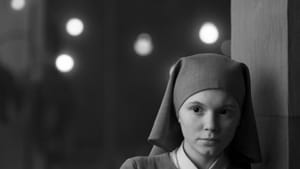Stay in the Loop
BSR publishes on a weekly schedule, with an email newsletter every Wednesday and Thursday morning. There’s no paywall, and subscribing is always free.
Pawel Pawlikowski's 'Ida' at Sundance

For two weeks in January, the small mountain town of Park City, Utah becomes the epicenter of the film world. Over 100 films filled the catalog of this year’s Sundance Film Festival, so how do attendees know where to begin? For me, it was sheer luck that I came across the masterpiece Ida at Sundance.
As a festival volunteer, my daily selection of films was often determined by the movies that fit between my Sundance shifts and a small amount of sleep. My tight schedule actually oriented me toward films I may not have otherwise selected for myself. This is how I discovered — or rather, stumbled upon — my favorite film of the festival.
Director Pawel Pawlikowski’s Ida tells the story of a novice nun preparing to take her vows in 1960s Poland. Orphaned and raised in the convent, Anna (Agata Trzebuchowska) has known nothing but Catholicism in her young, pious life. But just before she can take her vows, Anna meets her last living relative, her severe and forthright Aunt Wanda (Agata Kulesza). Wanda reveals several truths: that Anna’s name is in fact Ida, that her parents were killed during the war, and that she is Jewish.
Ida appears unshaken by this news, her veiled face ever tranquil. She calmly absorbs the new information and the old family photographs. She even takes to her new name with the same quiet coolness. But when she learns that her parents have no graves, Ida becomes determined to give them a proper burial. This sets up an unlikely journey for the aunt and niece, who begin a tragically quiet road trip in search of the bodies.
The pair sets out through misty Poland, Wanda dangling her cigarette out the window, Ida’s saintly face unchanging. Although the purpose of their journey carries so much weight, the pace seems unhurried. Indeed, the film handles impossibly heavy themes — faith and guilt and doubt — in this same unhurried manner. Ida’s slow and delicate exploration of these issues is far more heartbreaking than the high drama that could have easily been used in its place.
While the pace is slow, there is nothing dull about this film. In fact, the beauty of it shocked me awake. Ida is unlike any other film I have seen. This is due in part to the film’s unusual aspect ratio, which uses the nearly square screen format of the 1930s. Ida is also in black and white, a stylistic choice that cinematographer Lucasz Zal executed with grace. Unlike other modern black and white films — like this year’s Frances Ha and Nebraska, which are handsome but seem contrived — Ida is so smoothly shot that you believe its characters simply inhabit a world of black and white.
In the opening scene of the film, four young nuns carry a statue of Jesus to its pedestal outside the wintry convent. The new-fallen snow has a softening effect — really, though, the entire film shares this hushed quality. Ida has a graceful, velvety tone that begs to be re-wound and re-watched.
It is a film that rewards the patient viewer with an old-fashioned grace that feels completely novel. You’re not likely to find it in your local cineplex, though it is worth seeking out. I might have missed it myself if my Sundance schedule hadn’t aligned just so. The festival’s mission is to support original storytelling and to connect audiences to independent film — in my case, Sundance certainly worked its magic and led me to this artful film.
What, When, Where
Ida, a film directed by Pawel Pawlikowski; written by Pawlikowksi and Rebecca Lenkiewicz.
The Philadelphia Jewish Film Festival will screen Ida on Monday, March 31 at the Gershman Y, 401 South Broad Street, Philadelphia. Click here for information.
Sign up for our newsletter
All of the week's new articles, all in one place. Sign up for the free weekly BSR newsletters, and don't miss a conversation.

 Kayleigh Butera
Kayleigh Butera